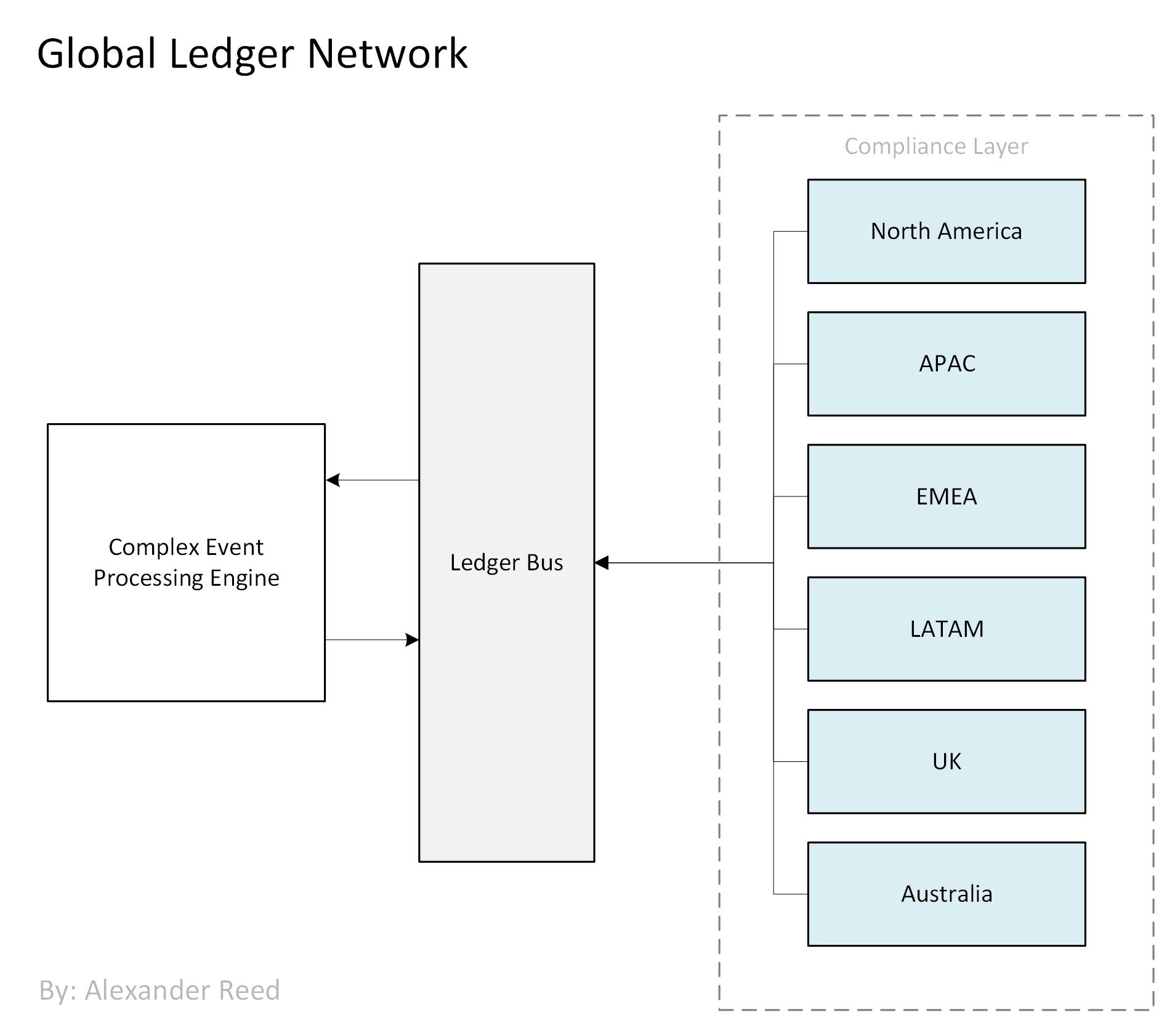X Chain: Proof of Compliance
We believe financial ecosystems can be programmed and that it is important to maintain distinct nature of every jurisdiction's regulatory framework. XFT's blockchain is designed to meet these varying compliance requirements and ensure transaction adhere to regulatory standards across the globe.
With XFT's compliance dApp and oracle, regulators can customize, maintain, update, and realize regulatory compliance as opposed to seeking a "global standard."


Regulator Portal
Our innovative regulator portal empowers regulatory bodies to directly update and program compliance standards on our platform. This proactive approach ensures that our blockchain platform remains flexible and compliant with the dynamic nature of global financial regulations.
Features of the Regulator Portal
- Dynamic Compliance Updates: Regulators can input and modify compliance rules directly, integrating these changes into the blockchain's operational protocols to ensure adherence to the latest standards.
- Smart Contract Templates: We provide pre-approved smart contract templates for various transactions, which users can quickly adapt and deploy, ensuring compliance and maintaining flexibility.
- Real-Time Monitoring and Reporting: Our portal includes tools for real-time monitoring of market activities and automatic compliance report generation, simplifying oversight and reducing the compliance burden on users.
- Customizable Permission Settings: Regulators can set permissions for different user types and transactions based on risk levels and regulatory requirements of each jurisdiction.
- Audit Trails and Transparency: The portal maintains immutable logs of all regulatory framework changes and transaction activities, enhancing auditability and trust.
Technical Implementation
- Decentralized Application (DApp) Interface: The portal is built as a DApp that interfaces directly with the blockchain, ensuring secure and immutable record-keeping.
- Use of Oracles: We employ blockchain oracles to securely bring external compliance data into the blockchain environment, facilitating automated legal compliance.
- Multi-Signature Approvals: Critical compliance changes require multi-signature approvals to enhance security and ensure consensus among trusted parties.
Benefits of the Regulator Portal
- Proactive Compliance: Direct updates by regulators allow XFT to swiftly adapt to changes, reducing downtime and compliance risks.
- Global Scalability: The solution scales globally without imposing a uniform standard, respecting the unique regulatory environments of each jurisdiction.
- Enhanced Trust and Credibility: A platform that regulators can trust and interact with directly is likely to receive favorable regulatory treatment.
- Reduced Regulatory Friction: By simplifying compliance, the platform enhances user experience and market efficiency.
Key Features
- Regulatory Nodes: Special nodes managed by regulatory authorities that update compliance standards.
- Validators: Nodes that validate transactions based on the latest compliance standards.
- Compliance Layer: A separate ledger to record and update compliance rules.
- Consensus Mechanism: Validators achieve consensus not only on the validity of transactions but also on their compliance with updated regulations.
Block Structure
import hashlib
import time
import json
class Block:
def __init__(self, index, previous_hash, timestamp, data, hash):
self.index = index
self.previous_hash = previous_hash
self.timestamp = timestamp
self.data = data
self.hash = hash
class ComplianceBlock:
def __init__(self, index, previous_hash, timestamp, compliance_data, hash):
self.index = index
self.previous_hash = previous_hash
self.timestamp = timestamp
self.compliance_data = compliance_data
self.hash = hash
Compliance Layer
class Blockchain:
def __init__(self):
self.chain = [self.create_genesis_block()]
self.compliance_chain = [self.create_genesis_compliance_block()]
def create_genesis_block(self):
return Block(0, "0", time.time(), "Genesis Block", self.calculate_hash(0, "0", time.time(), "Genesis Block"))
def create_genesis_compliance_block(self):
compliance_data = {
"rules": [],
"updated_by": "Regulator"
}
return ComplianceBlock(0, "0", time.time(), compliance_data, self.calculate_compliance_hash(0, "0", time.time(), compliance_data))
def calculate_hash(self, index, previous_hash, timestamp, data):
value = str(index) + previous_hash + str(timestamp) + data
return hashlib.sha256(value.encode('utf-8')).hexdigest()
def calculate_compliance_hash(self, index, previous_hash, timestamp, compliance_data):
value = str(index) + previous_hash + str(timestamp) + json.dumps(compliance_data)
return hashlib.sha256(value.encode('utf-8')).hexdigest()
def get_latest_block(self):
return self.chain[-1]
def get_latest_compliance_block(self):
return self.compliance_chain[-1]
def add_block(self, data):
latest_block = self.get_latest_block()
new_index = latest_block.index + 1
new_timestamp = time.time()
new_hash = self.calculate_hash(new_index, latest_block.hash, new_timestamp, data)
new_block = Block(new_index, latest_block.hash, new_timestamp, data, new_hash)
self.chain.append(new_block)
def add_compliance_block(self, compliance_data, updated_by):
latest_block = self.get_latest_compliance_block()
new_index = latest_block.index + 1
new_timestamp = time.time()
compliance_data["updated_by"] = updated_by
new_hash = self.calculate_compliance_hash(new_index, latest_block.hash, new_timestamp, compliance_data)
new_block = ComplianceBlock(new_index, latest_block.hash, new_timestamp, compliance_data, new_hash)
self.compliance_chain.append(new_block)
def is_chain_valid(self):
for i in range(1, len(self.chain)):
current_block = self.chain[i]
previous_block = self.chain[i - 1]
if current_block.hash != self.calculate_hash(current_block.index, current_block.previous_hash, current_block.timestamp, current_block.data):
return False
if current_block.previous_hash != previous_block.hash:
return False
return True
def is_compliance_chain_valid(self):
for i in range(1, len(self.compliance_chain)):
current_block = self.compliance_chain[i]
previous_block = self.compliance_chain[i - 1]
if current_block.hash != self.calculate_compliance_hash(current_block.index, current_block.previous_hash, current_block.timestamp, current_block.compliance_data):
return False
if current_block.previous_hash != previous_block.hash:
return False
return True
def is_transaction_compliant(self, transaction):
latest_compliance_block = self.get_latest_compliance_block()
compliance_rules = latest_compliance_block.compliance_data["rules"]
# Validate the transaction against the latest compliance rules
for rule in compliance_rules:
if not rule(transaction):
return False
return True
Update Mechanism
class RegulatorNode:
def __init__(self, blockchain):
self.blockchain = blockchain
def update_compliance_rules(self, new_rules):
compliance_data = {
"rules": new_rules
}
self.blockchain.add_compliance_block(compliance_data, "RegulatorNode")
# Example usage
blockchain = Blockchain()
regulator = RegulatorNode(blockchain)
def aml_rule(transaction):
# Dummy AML rule
return "aml_check" in transaction and transaction["aml_check"] == True
def kyc_rule(transaction):
# Dummy KYC rule
return "kyc_check" in transaction and transaction["kyc_check"] == True
# Update compliance rules
regulator.update_compliance_rules([aml_rule, kyc_rule])
# Add a transaction
transaction = {
"aml_check": True,
"kyc_check": True,
"amount": 1000
}
if blockchain.is_transaction_compliant(transaction):
blockchain.add_block(json.dumps(transaction))
else:
print("Transaction is not compliant")
Summary
- Block Structure: Defined blocks for transactions and compliance updates.
- Compliance Ledger: Separate ledger for compliance rules, managed by regulatory nodes.
- Proof of Compliance Mechanism: Ensures transactions are validated against the latest compliance standards.
- Regulatory Node: Allows regulators to update compliance standards dynamically.
- Transaction Compliance Check: Ensures transactions meet current compliance rules before adding to the blockchain.